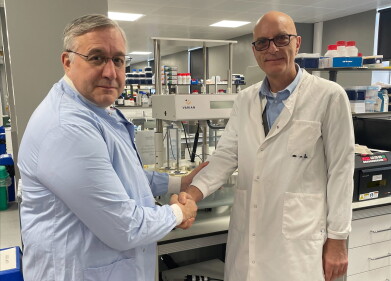News
Perfect Double: Protecting Communications stored in Images
Mar 15 2023
A breakthrough in secure communications has been achieved by an international team of researchers led by the University of Oxford who have developed an algorithm capable of concealing sensitive information.
Dr Christian Schroeder de Witt, Department of Engineering Science, University of Oxford, said: “This breakthrough in secure communications promises unprecedented levels of security and efficiency to its users, who may enjoy a much higher extent of plausible deniability than with previous steganographic methods. We will be working with all relevant communities of stakeholders, including humanitarian aid workers and investigative journalists, to unlock its potential in the real world.”
Working in close collaboration with Carnegie Mellon University, the new method applies to a setting called steganography, the practice of hiding sensitive information inside of innocuous content; this differs from cryptography because sensitive information is concealed in such a way as to obscure the fact that something has been hidden. An example could be hiding a Shakespeare poem inside an AI-generated image of a cat.
The research team used recent breakthroughs in information theory, specifically minimum entropy coupling, which allows one to join two distributions of data together such that their mutual information is maximised, but the individual distributions are preserved.
As a result, with the new algorithm, there is no statistical difference between the distribution of the innocuous content and the distribution of content that encodes sensitive material. The algorithm was tested using several types of models that produce auto-generated content, such as GPT-2, an open-source language model, and WAVE-RNN, a text-to-speech converter. Besides being perfectly secure, the new algorithm showed up to 40% higher encoding efficiency than previous steganography methods across a variety of applications, enabling more information to be concealed within a given amount of data. This may make steganography an attractive method even if perfect security is not required, due to the benefits for data compression and storage.
The research team has filed a patent for the algorithm, but intend to issue it under a free licence to third parties for non-commercial responsible use. This includes academic and humanitarian use, and trusted third-party security audits. The researchers have published this work as a preprint paper, as well as open-sourced an inefficient implementation of their method on Github. They will also present a paper ‘Perfectly Secure Steganography Using Minimum Entropy Coupling’ at the premier AI conference, the 2023 International Conference on Learning Representations in May.
Contributing author Professor Jakob Foerster (Department of Engineering Science, University of Oxford) added: ‘This paper is a great example of research into the foundations of machine learning that leads to breakthrough discoveries for crucial application areas. It's wonderful to see that Oxford, and our young lab in particular, is at the forefront of it all.’
The study also involved Samuel Sokota and Professor Zico Kolter at Carnegie Mellon University, USA, and Dr Martin Strohmeier from armasuisse Science+Technology, Switzerland. The work was partially funded by a EPSRC IAA Doctoral Impact fund hosted by Professor Philip Torr, Torr Vision Group, at the University of Oxford.
More information online
Digital Edition
Lab Asia 32.2 April
April 2025
Chromatography Articles - Effects of small deviations in flow rate on GPC/SEC results Mass Spectrometry & Spectroscopy Articles - Waiting for the present to catch up to the future: A bette...
View all digital editions
Events
Apr 09 2025 Tokyo, Japan
Apr 22 2025 Hammamet, Tunisia
Apr 22 2025 Kintex, South Korea
Analytica Anacon India & IndiaLabExpo
Apr 23 2025 Mumbai, India
Apr 23 2025 Moscow, Russia
.jpg)


















